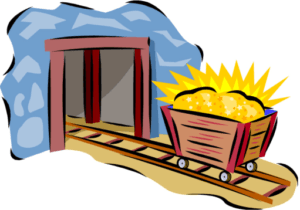LESSON 5.10
More About Citing

Review: Citing One Author
1. Remove the period from the last sentence of information you borrowed.
2. Add one space and a left parenthesis, then the author’s last name ONLY, followed by a comma and a space (Smith,
3. Place the year ONLY, then the end parenthesis, then a period (Smith, 2024).
Two Authors
4. If there are two authors, use an ampersand: (Smith & Wesson, 2024).
Three or More Authors
5. If there are three+ authors, type the first name – last name ONLY –then type et al. There is no period after et (it means “and”). There is a period after al. (It is an abbreviation for “others.”). Put in the year, then the right parenthesis, then a period (Jackson et al., 2024).
Association or Other Group as Author
6. Associations or similar groups sometimes work together to write a pamphlet, booklet, or other document. Treat the association as the author. This does not, however, refer to a publisher (Association of Basel Growers, 1906).
No Author: Article
7. Put the first few words from the article title. Put quotation marks around the word(s) and a comma on the INSIDE of the right quotation mark. Then a space, the year, the right parenthesis, and a period (“The Globe Inside,” 2024).
No Author: Website or Book
8. Put the title (or the first few words) of the book or website in italics. Capitalize the first word and all big words. Then put a comma, a space, and the year. Then the right parenthesis, and a period (Plastics, 2024).
No Date
9. If you cannot find a date, then type n.d. instead of the year (Jones, n.d.).
Dates and Websites
10. For websites, scroll down to the bottom of the site. Usually there will be a date the website began plus this year (Oceanic Currents, 2001-2024). Change any right-hand year to the current year. For example, maybe a website named Muscle Pain says 2005-2021. Change it to (Muscle Pain, 2005-2024).

Task 5.10.1 – Individual or Tandem
Pretend this sentence is the last one in a paragraph that only has one source. Set up an in-text citation for the following. Disregard all needless information.
A. A book titled The Jumping Gators of Papua New Guinea, written by Harrison L. Benson and published in 1921 by Randolph Press.
B. An article, “Energy Production in the Indigenous Pre-contact World,” written by Jayne Festenton and C.L. Bentley, in Energy and the Nonindustrialized World, volume 6, issue 3, 1995, pages 5-15.
C. A website, Flowers of Pitcairn Island, no author. Copyright 2005-2022.
D. A website, European Running, 2009-2024, with an article in it, “Paavo Nurmi,” written by Avery Schmidt.
E. A book, A History of Neuroscience, written by Grace Maidrew, Robert Hickson, and Jeremy Tittle, published by Putnam in 1998.
Multiple Sources Having Same Information
11. Sources usually have a lot of the same information. When that happens, you have three options:
a. Divide up the duplicated information. For example, if you use three sources and they have the same information, then divide the information between them.
Example
In the following paragraph, duplicated information (such as how aye-ayes find food) is divided between the four sources).
Though quite small, the aye aye-aye lemur is the world’s largest nocturnal primate (“Aye-Aye,” 1996-2010). It is characterized by its unusual method of finding food: it taps on trees to find grubs, then gnaws holes in the wood using its forward-slanting incisors to create a small hole into which it inserts its narrow middle finger to pull the grubs out. This foraging method is called percussive foraging, and takes up 5–41% of foraging time (Erickson et al., 1998). The only other living mammal species known to find food in this way are the striped possum and trioks (genus Dactylopsila) of northern Australia and New Guinea, which are marsupials (Sterling, 2003). From an ecological point of view, the aye-aye fills the niche of a woodpecker, as it is capable of penetrating wood to extract the invertebrates within (Sterling & McCreless, 2006).
b. Cite one source for duplicated information. Cite other sources only if their information does not occur in another source you are using.
Example
In the paragraph below, Erickson et al. (1998) appears to be the only souce with non-repeated information. Therefore, you can cite the entire paragraph from Erickson et al. if you wish.
Though quite small, the aye aye-aye lemur is the world’s largest nocturnal primate (“Aye-Aye,” 1996-2010). It is characterized by its unusual method of finding food: it taps on trees to find grubs, then gnaws holes in the wood using its forward-slanting incisors to create a small hole into which it inserts its narrow cmiddle finger to pull the grubs out. This foraging method is called percussive foraging, and takes up 5–41% of foraging time (Erickson et al., 1998). The only other living mammal species known to find food in this way are the striped possum and trioks (genus Dactylopsila) of northern Australia and New Guinea, which are marsupials (Sterling, 2003). From an ecological point of view, the aye-aye fills the niche of a woodpecker, as it is capable of penetrating wood to extract the invertebrates within (Sterling & McCreless, 2006).
Advantages:
- Increases the number of citations
Disadvantages
- Reduces number of citations in your paper
- Risks citing information in the wrong source
c. Bunch the paragraph’s sources into one citation. Put them in alphabetical order, and place a semi-colon between them.
Though quite small, the aye aye-aye lemur is the world’s largest nocturnal primate. It is characterized by its unusual method of finding food: it taps on trees to find grubs, then gnaws holes in the wood using its forward-slanting incisors to create a small hole into which it inserts its narrow middle finger to pull the grubs out. This foraging method is called percussive foraging and takes up 5–41% of foraging time. The only other living mammal species known to find food in this way are the striped possum and trioks (genus Dactylopsila) of northern Australia and New Guinea, which are marsupials. From an ecological point of view, the aye-aye fills the niche of a woodpecker, as it is capable of penetrating wood to extract the invertebrates within (“Aye-Aye,” 1996-2010; Erickson et al., 1998; Sterling, 2003; Sterling & McCreless, 2006).
Advantages:
- Simplifies citing
Disadvantages
- Does not indicate which source has information the others do not.
- Students often abuse this by listing sources they have not read.
